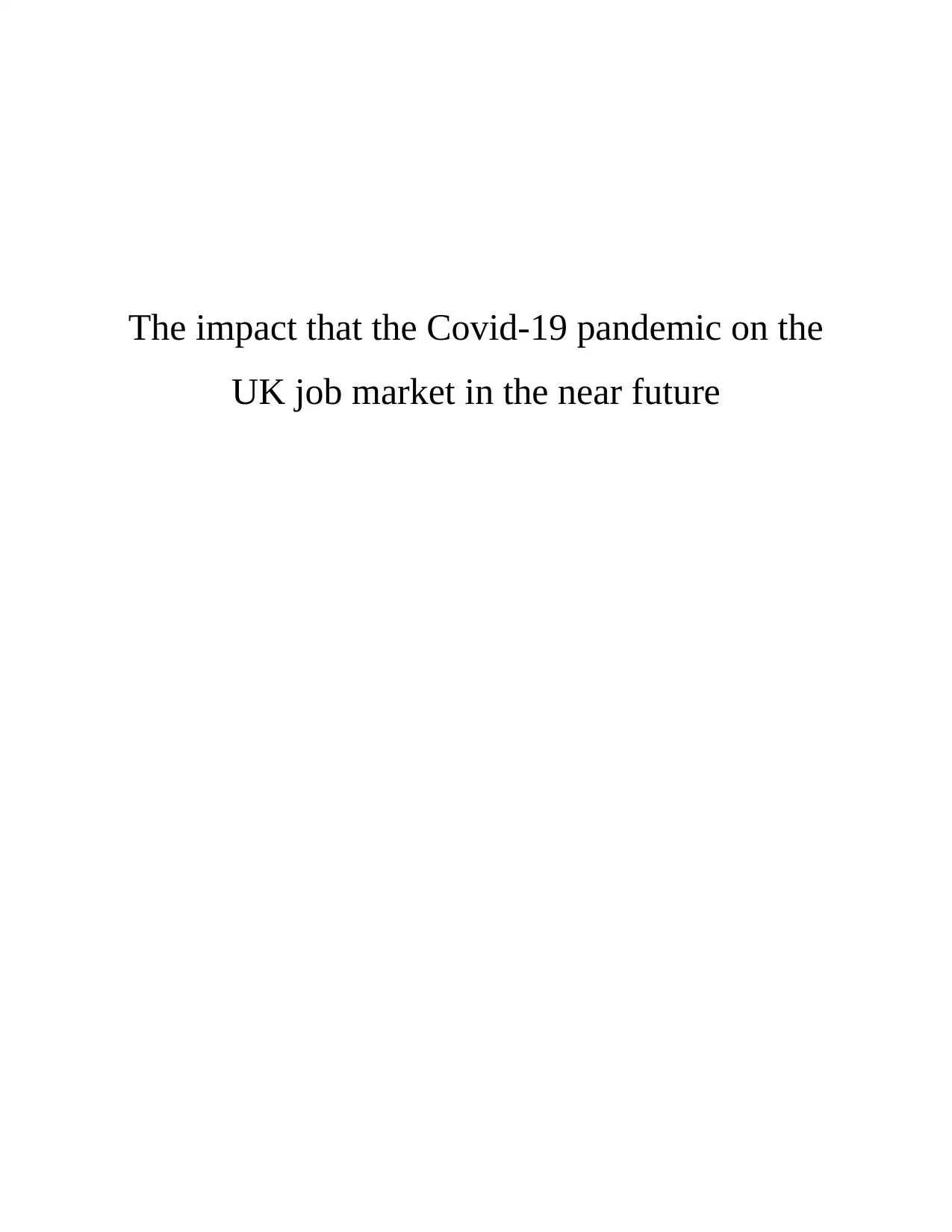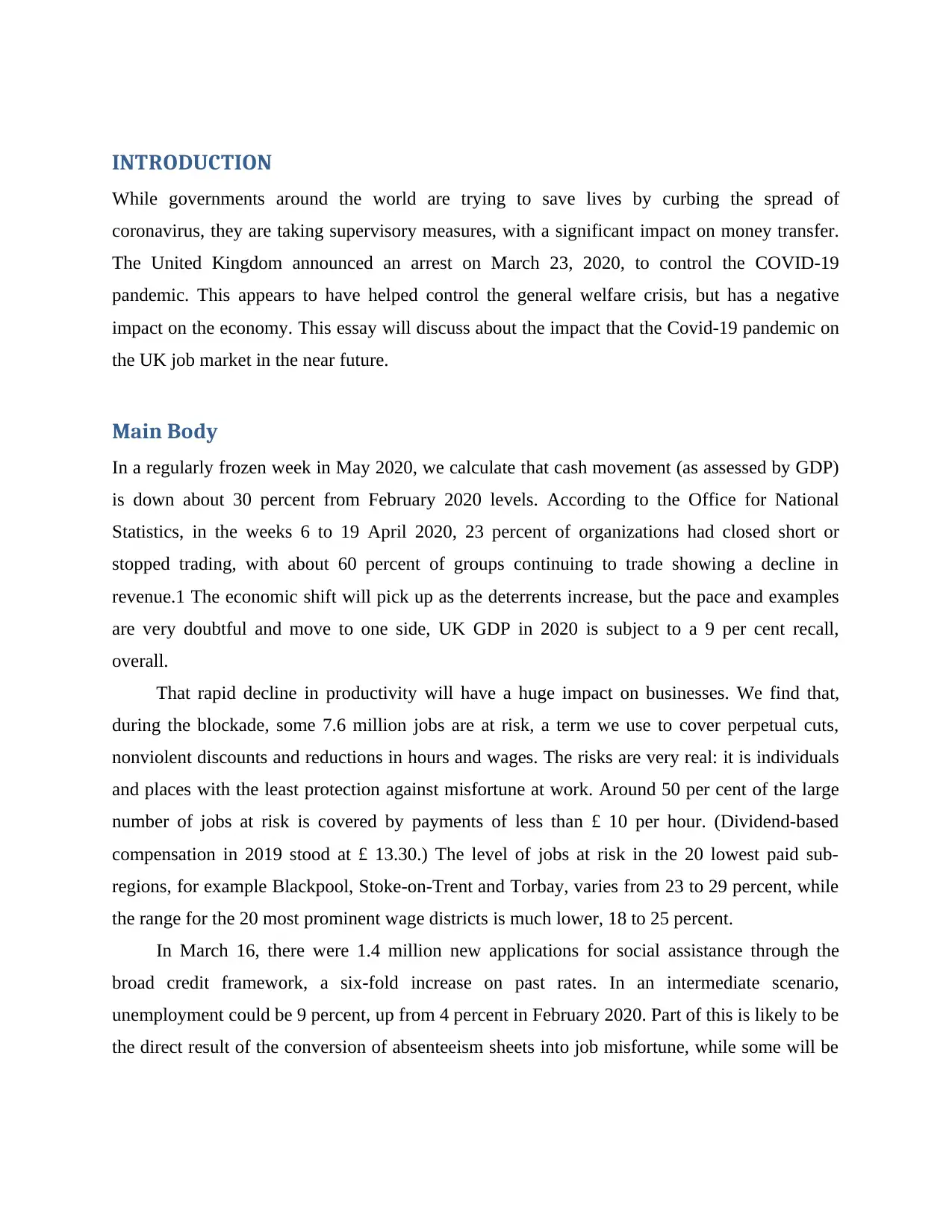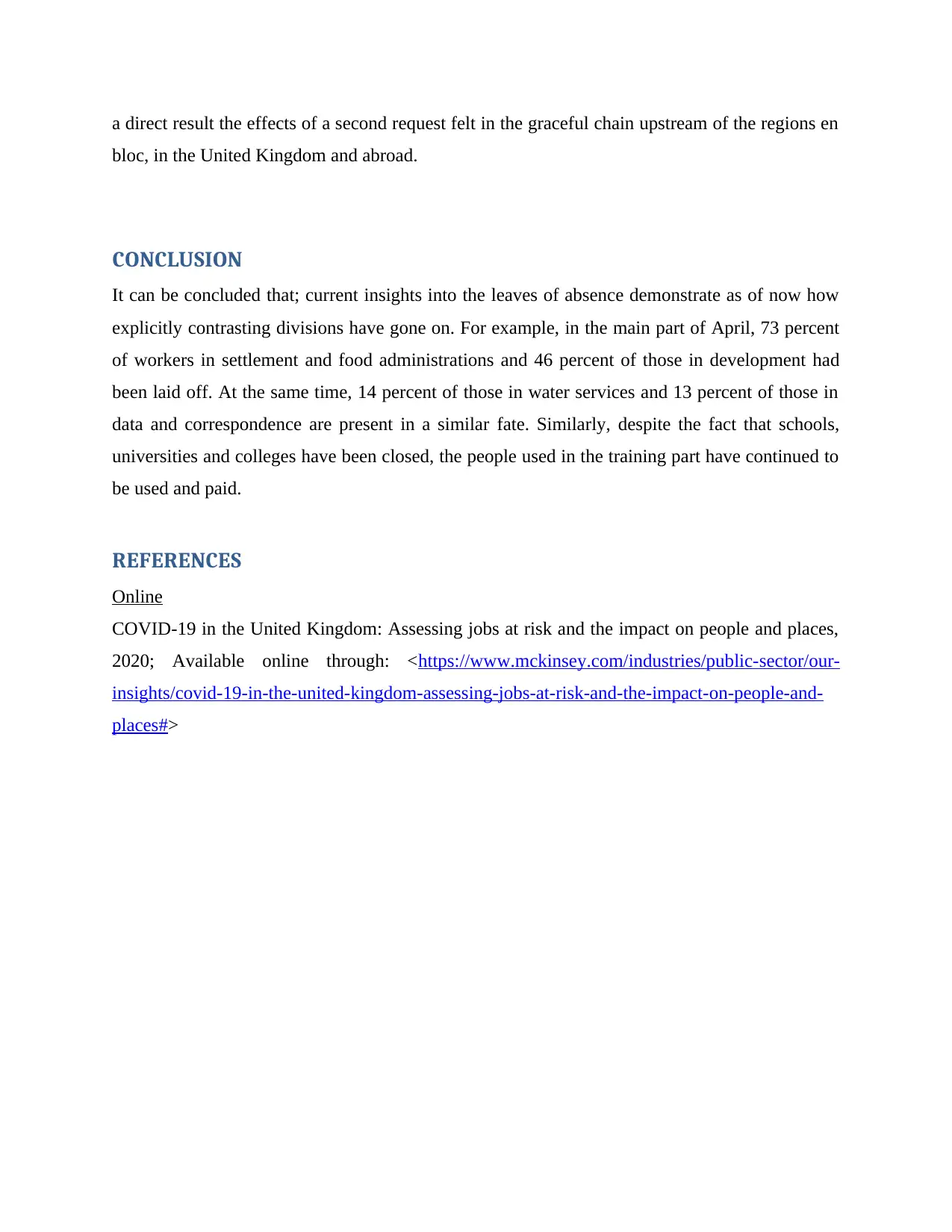COVID-19 Pandemic's Influence on the UK Job Market in the Near Future
VerifiedAdded on 2023/01/10
|3
|613
|68
Essay
AI Summary
This essay examines the significant impact of the COVID-19 pandemic on the UK job market. It begins by outlining the economic context, including the UK's lockdown measures in response to the pandemic and the resulting decline in economic activity. The essay then delves into the specific effects on employment, citing statistics on job losses, unemployment rates, and the sectors most affected, such as hospitality and construction. It highlights the disproportionate impact on lower-paid workers and the rise in social assistance applications. The conclusion summarizes the immediate and potential future consequences, emphasizing the contrasting impacts across different sectors and the continued use of employees in some sectors despite closures. The essay draws on reports and data to analyze the pandemic's effect on the UK job market.
1 out of 3








![[object Object]](/_next/static/media/star-bottom.7253800d.svg)